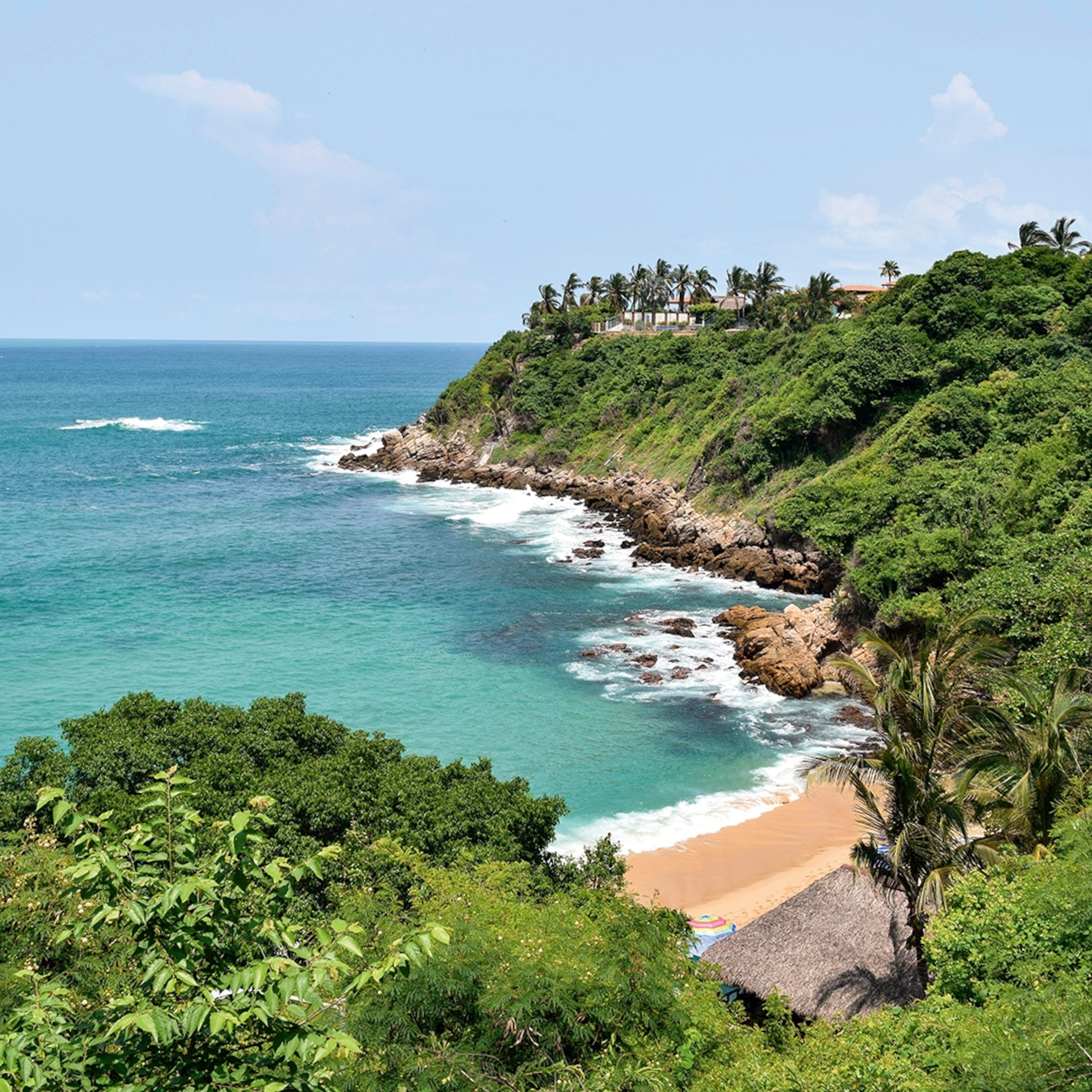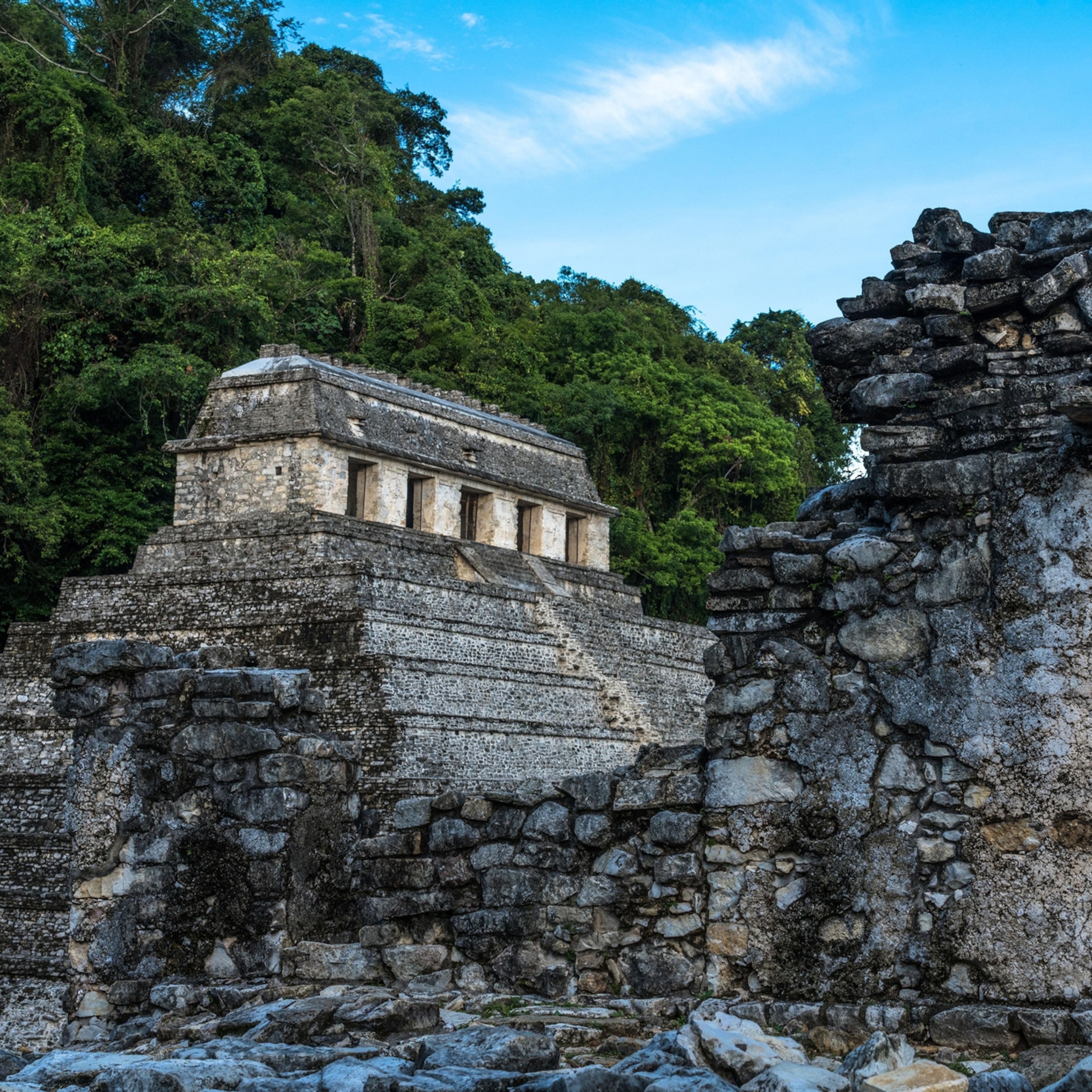Visiting Mexico’s Maya in a Chiapas Cave of Curses
Visit this Mexican state to experience colonial San Cristóbal, learn about Maya history, and discover the region's lush jungle.
“Do you want to leave a curse?”
I don’t get asked this often, but I’m rarely in a Maya cave. On the steep climb in, one of our group bit it and had to clamber up the loose dirt, staining his acid-washed jeans. With our legs fully wobbling, we finally make it into the cave. I hear the rush of a hidden spring and see a flicker dotting the ceiling above. “Gold,” someone says. Nearby stand three crosses, draped in pine and cornhusks as is the local custom. Behind them is the hole in the wall where locals leave curses.
I don’t. I couldn’t even if I wanted to. Because I forgot to bring a chicken.
Chiapas

Chiapas is Mexico’s southernmost state, and—on my fourth visit here—it’s reminding me why it’s my favorite. It’s mountainous and cool in places, jungled and steamy in others. The remarkable history of the Maya can be explored at superb ruins like Palenque, while the Maya’s present flourishes in villages. Particularly ones outside my starting base, San Cristóbal de las Casas.
San Cristóbal is the heart of Chiapas, a gorgeous colonial town of handicraft co-ops, hacienda-style inns, neat cafes serving local coffee beans, and bars pouring a local corn-based liquor called pox (pronounced “posh”). Everyday seems like a party, with fireworks and musicians in the zócalo—or sudden parades (as I learned when starting my Facebook Live broadcast).
Today I’m on a see-what-happens visit of the nearby Maya village San Lorenzo Zinacantán with Nomad Republic, a Mexico City-based operator that customizes volunteer trips to traditional communities. Many local day trip tours make it here too, but we’re trying something different. My guides know someone who knows the presidente of this Tzotzil-speaking village, famous for roses and handicrafts. We’re going to try to chase him down.
Whatever happens, I love it already.
San Cristóbal
The short ride from San Cristóbal weaves up into the green hills, passing the village of San Juan Chamula, where the pews of a Catholic church have been taken out and replaced with pine needles. Worshippers come with Coca-Cola to burp up evil spirits and sometimes bring chickens to aid in prayers. When the priest offers a blessing, a man exits to shoot a firecracker rocket high into the sky.
Zinacantán
Once we reach Zinacantán (population around 4,000), we park by a pickup, where a guy is unloading a bag of iguanas by a basketball court. Gathered on steps above are a hundred or so local women in purplish, floral rebozos. They’re waiting to get into the giant lavender town hall, where they collect government grants for their kids’ educations every two months.
We walk a few blocks to a hilly street called Calle Niño Perdido (Lost Boy) and come to a mud-walled house called Tonik. Racks of textile weavings are here—blouses, blankets, shawls—and a local woman crouches over a telar (loom). We go beyond into the kitchen for a tortilla demonstration (something I remembered from a family trip to Puerto Vallarta when I was nine). A woman laughs as I clumsily make one on her hot skillet. My creation is wrinkled and burned in places, yet—once self-served with lime, pumpkin pepitas, white cheese, and chili—totally delicious.
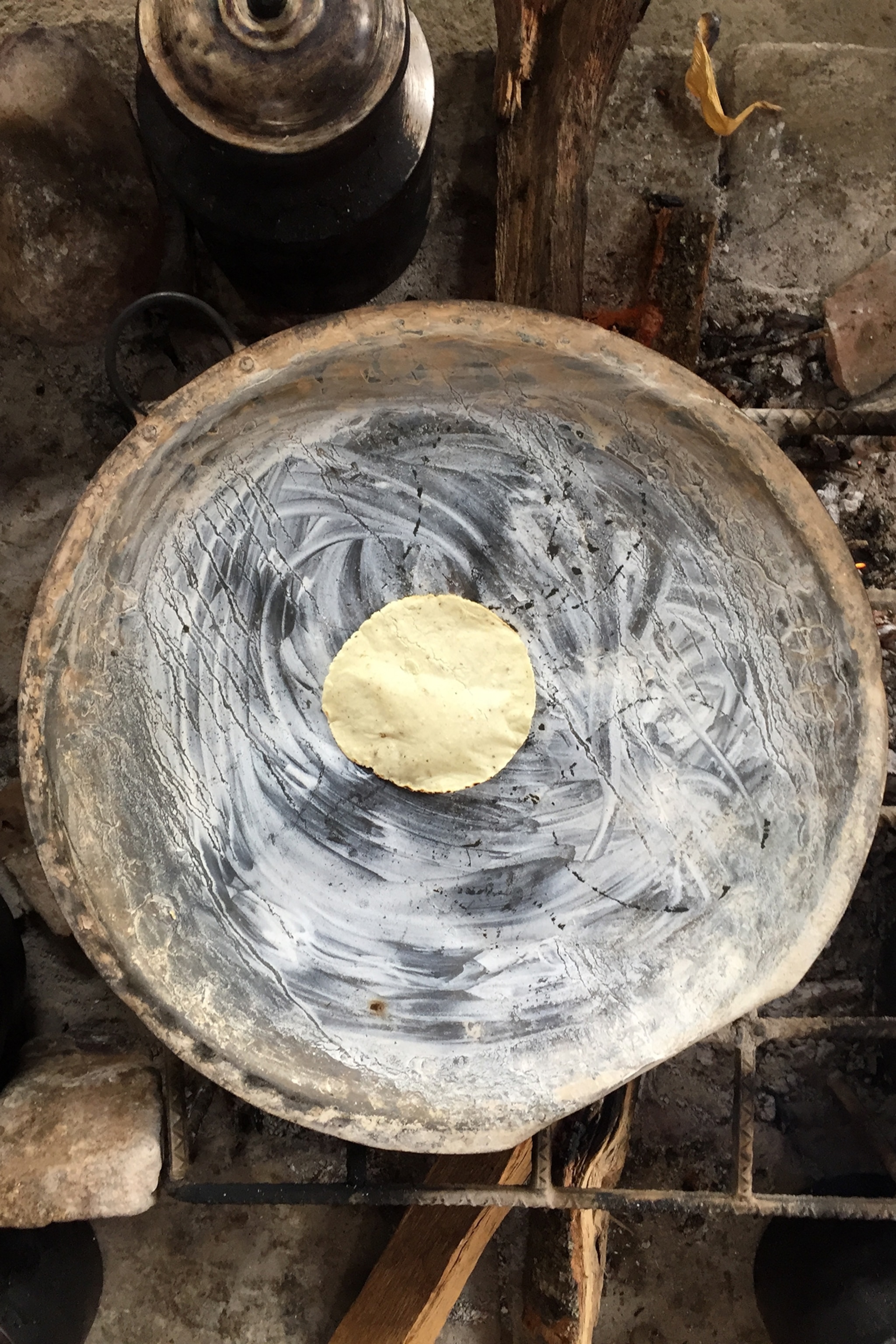
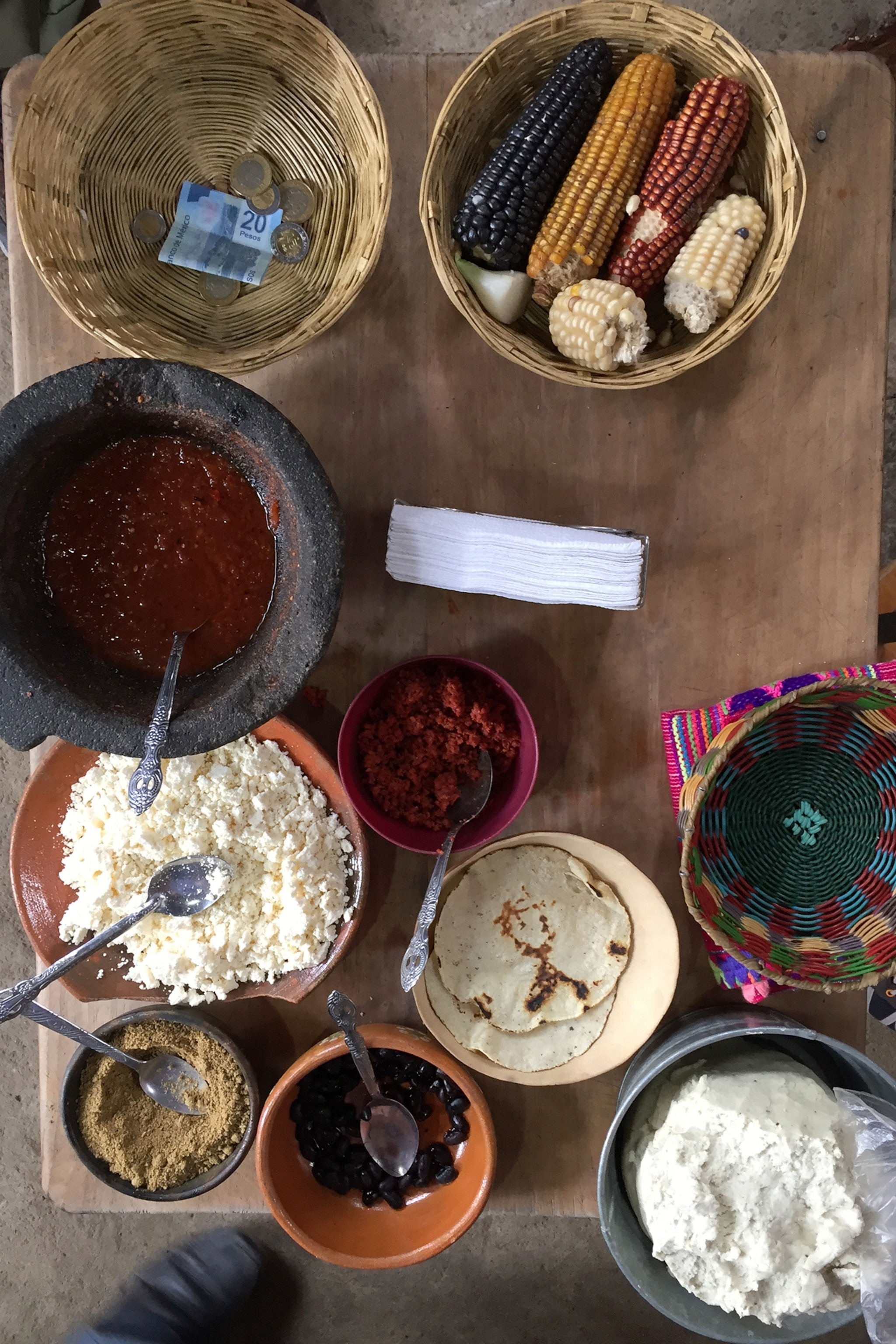
On the way out, I spy a “judge’s altar” and stop to inspect. Mixing Catholic and Maya traditions, it’s not something you’d see at the Vatican. Figures—including Jesus, Mary, and a little kid doll with a stethoscope—are enshrined in a series of green palm leaves and ornato flowers. Below, burning candles are set in clay animal figurines and a trickle of smoke rises from burning copal incense. The doll represents a child doctor; local tradition is to pray to him when sick.
“There’s a world going on here,” I say. It’s the best part of our first stop.
After a quick look at the main two churches, we go to town hall. As I’m ushered inside a room, someone calls out from behind me, “Be sure to shake everyone’s hands!”
Inside the room, 20 men in purple floral ponchos are standing and looking at me. These are the town leaders. I shake their hands, one by one.
It’s a slow process, finishing with a seat at the long conference table, which has a Santa Claus–themed covering. I don’t know what to expect when the presidente, a jovial, young-looking man at the head of the table, starts to speak. My Spanish is limited, but I get the gist. He’s talking of life in Zinacantán, their hopes, the challenges to get young people to study Tzotzil.
Then he looks to me. My turn?
I stumble in Spanish: “Sorry, I don’t speak Tzotzil. I don’t Spanish much either.” (They laugh at that.) “I’m a travel writer. I travel to many places. I’ve been to your village before. Mexico is my favorite, and Chiapas is my favorite state in Mexico. Thank you.”
Then someone begins handing out bottles from a big bag.
“This is water, not pox,” jokes the president, Manuel Martínez Jiménez. This takes several minutes, everyone getting a small bottle of mineral water. Except the president, who gets a one-liter bottle.
Then we all take selfies with each other.
The San Juan Cave
Finally, amid the fun, a leader named Vicente asks, “Do you want to see a cave?” Soon we’re heading off on a three-hour personalized tour of the Zinacantán area with four town leaders crammed into our van. (Apparently the best tours up here begin when you pay respects to town leaders.)
We first see the traditional cemetery, on the town’s highest hill. Graves are decorated with flowers stuffed into old Fanta bottles. I see orange peels and dried corn husks, leftovers from a recent offering. “We come every Sunday for five or six years, then don’t return,” Vicente says. “The deceased’s spirit is gone by then.”
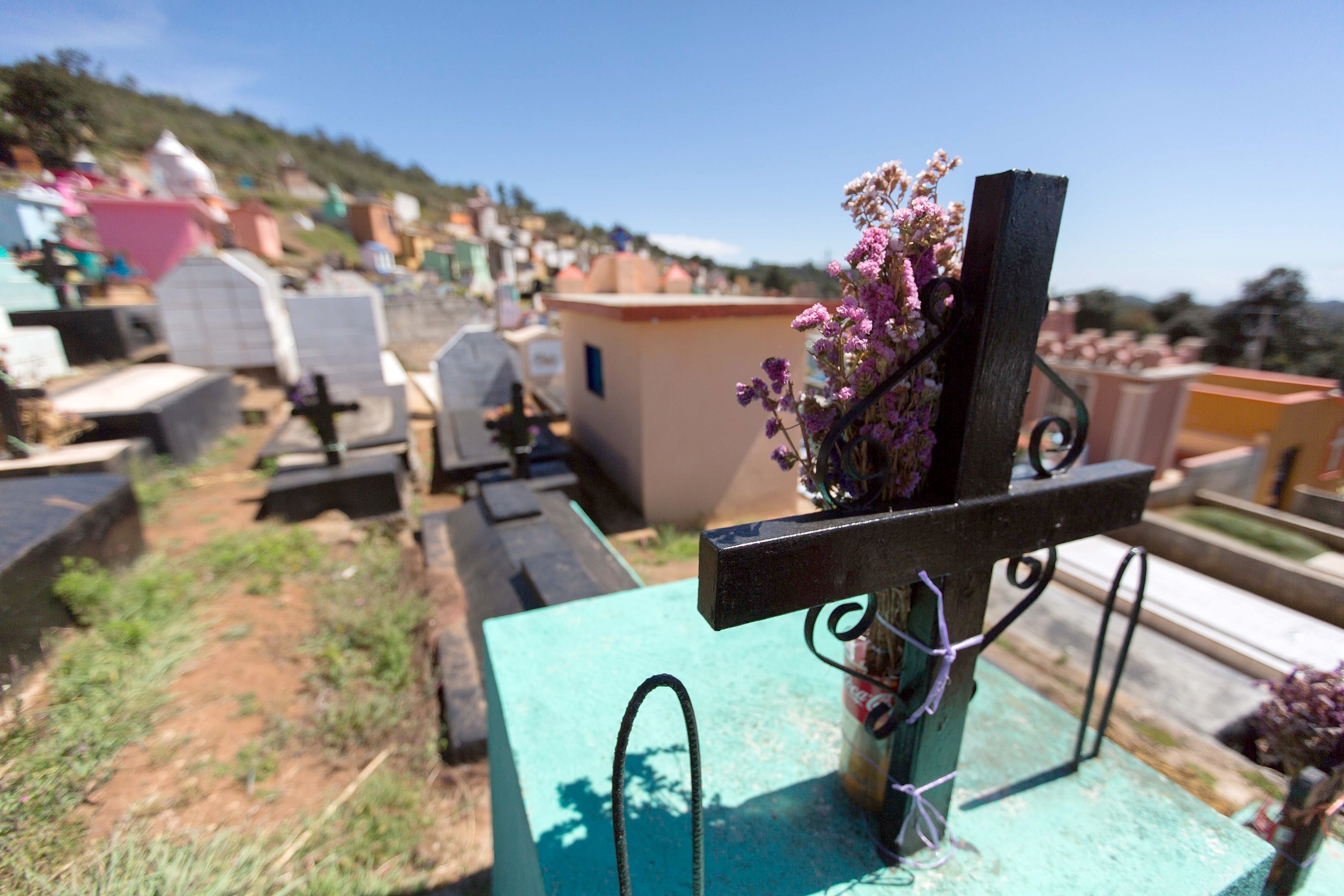
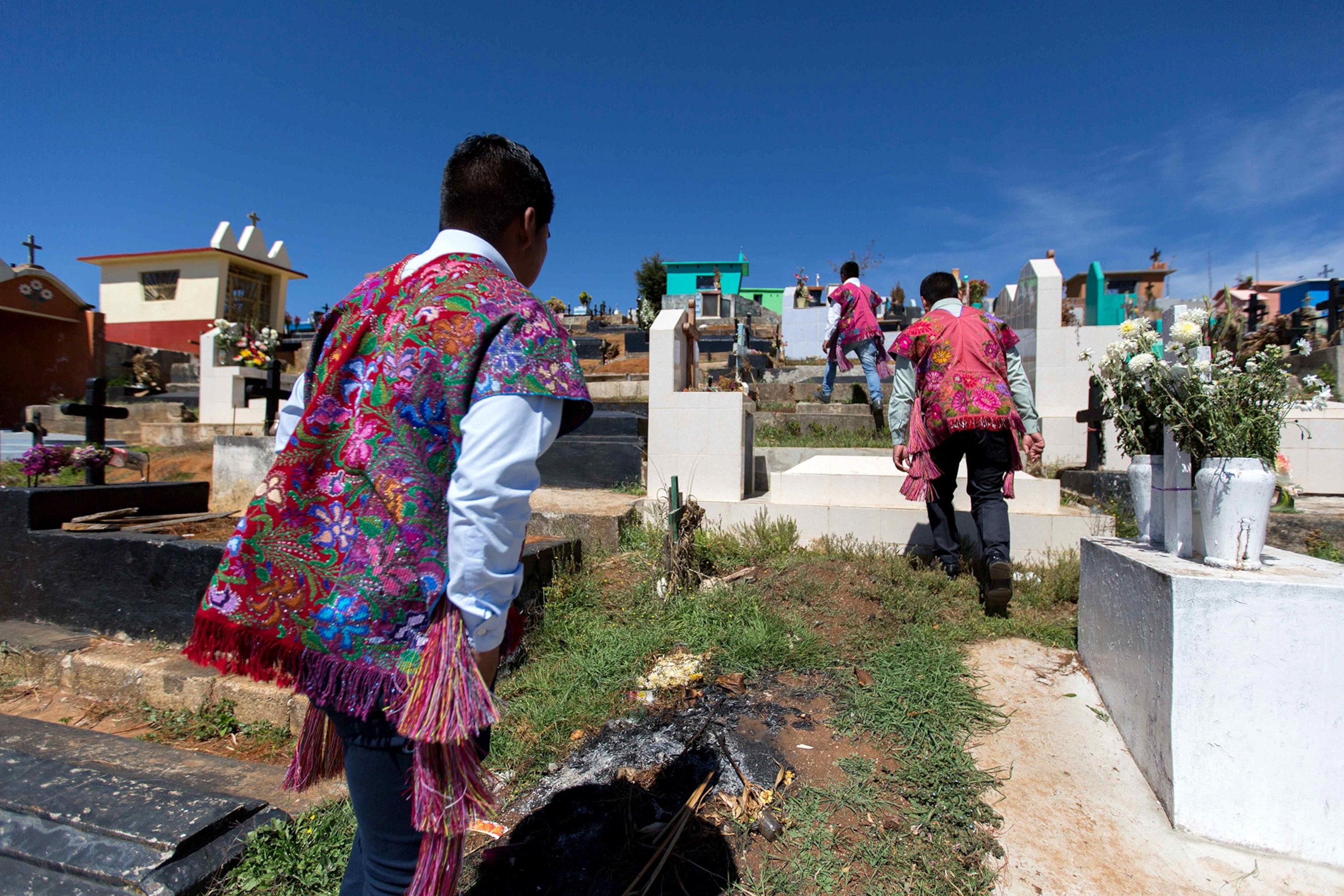
Twisting mountain roads pass many greenhouses used to raise roses. As we drive, we talk bats. “Zinacantán” is Nahuatl for “place of bats.” And apparently there are many. Vicente, the chattiest of the leaders with us, tells me that “bat blood is used by curanderos”—traditional doctors, sometimes translated as wizards—“to cure people. And many keep dried bat legs in their pockets to keep away bad spirits.”
Once inside the San Juan cave, after our steep half-hour hike, we find no bats. (I’m relieved.) But the dark spot is an ideal place for stories about other Maya caves.
“Every cave has its owner, who creates a spirit to be the cave’s protector,” Vicente says. “They are not good or bad. They can help you or hurt you.”
- National Geographic Expeditions
One cave, he says, has a mermaid with the face of a corpse; another has a rock said to represent a certain aspect of the female anatomy. When a potential suitor leaves an article of a woman’s clothing there, “you win her heart.”
“I’m 100 percent sure it works. I’ve done it,” Vicente testifies. “I’ve done it. But I don’t need to anymore. I’m very handsome.”
Another cave leads to another dimension, he says. Standing in the dark, under the flicker of gold and by a rock where curses for “enemies” are stored with a chicken sacrifice, I ask Vicente which dimension.
“The 1960s.”
A friend of his has been several times, he says. “Many people go.”
I’m happy to leave curses alone, but a visit to the 1960s sounds interesting. Next time.

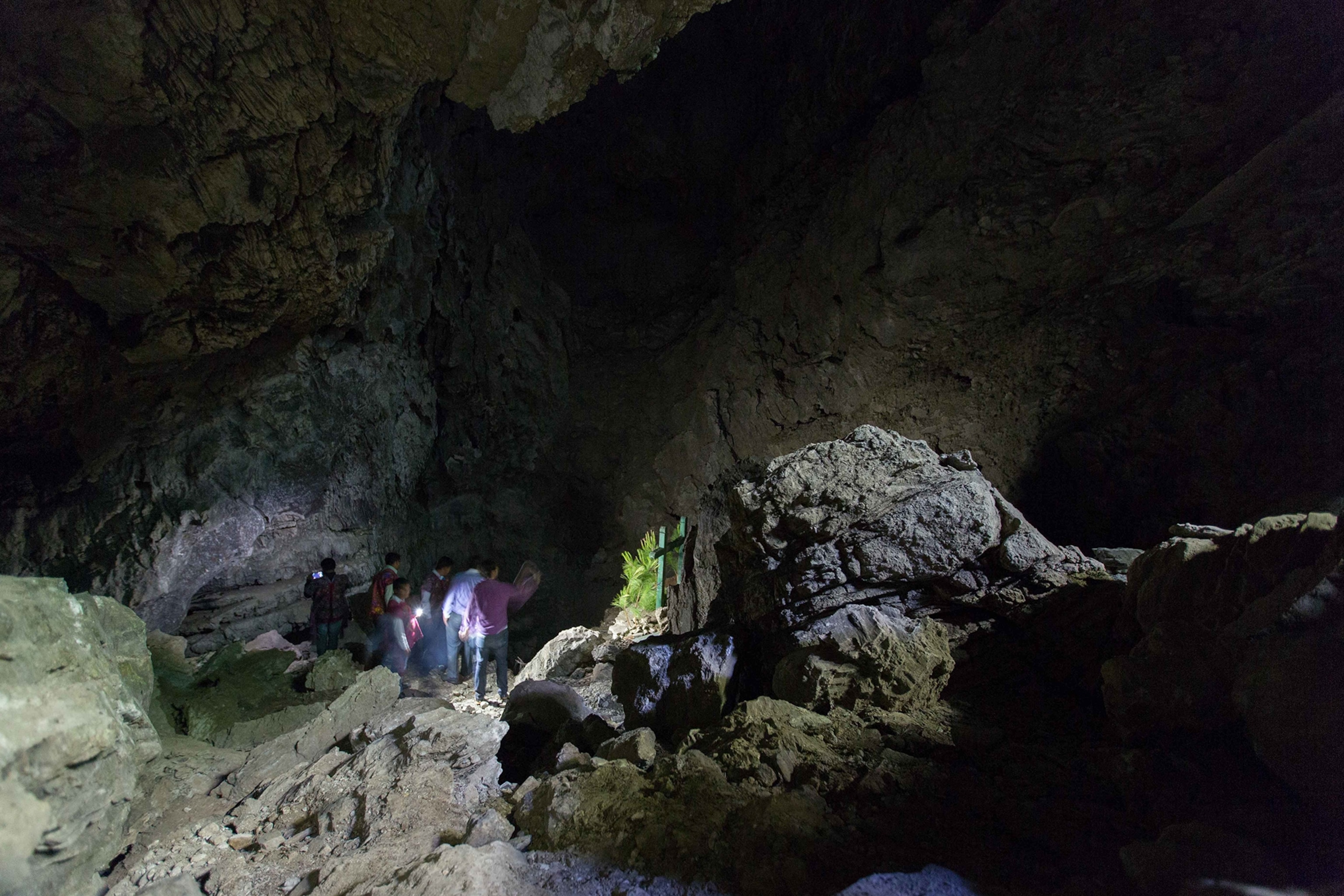
How to Do This Trip
Get a Guide: It’s best to visit traditional villages with a guide, particularly one with local contacts. Note that taking photos can be seen as soul-capturing, so always ask first. Sights like the San Juan cave can only be visited by local invitation.
Take a Day Trip: Nomad Republic offers multiday trips in English with local guides to San Juan Chamula and Zinacantán. There is lunch in a local’s home, then visits to the Toniná ruins at Ocosingo and jungle walks, waterfalls, and more ruins in the Lancandón jungle. My trip is an example of what might happen on one, but can’t be always be replicated. For day trips from San Cristóbal, Alex and Raul Tours are a small-group operator that runs half-day tours in Spanish, English, or French daily. Just show up by 9:30 a.m. at the cross outside the San Cristóbal cathedral.
Try a Local Drink: To try pox, San Cristóbal’s Posheria samples and sells bottles using the age-old Maya recipe with corn liquor.
